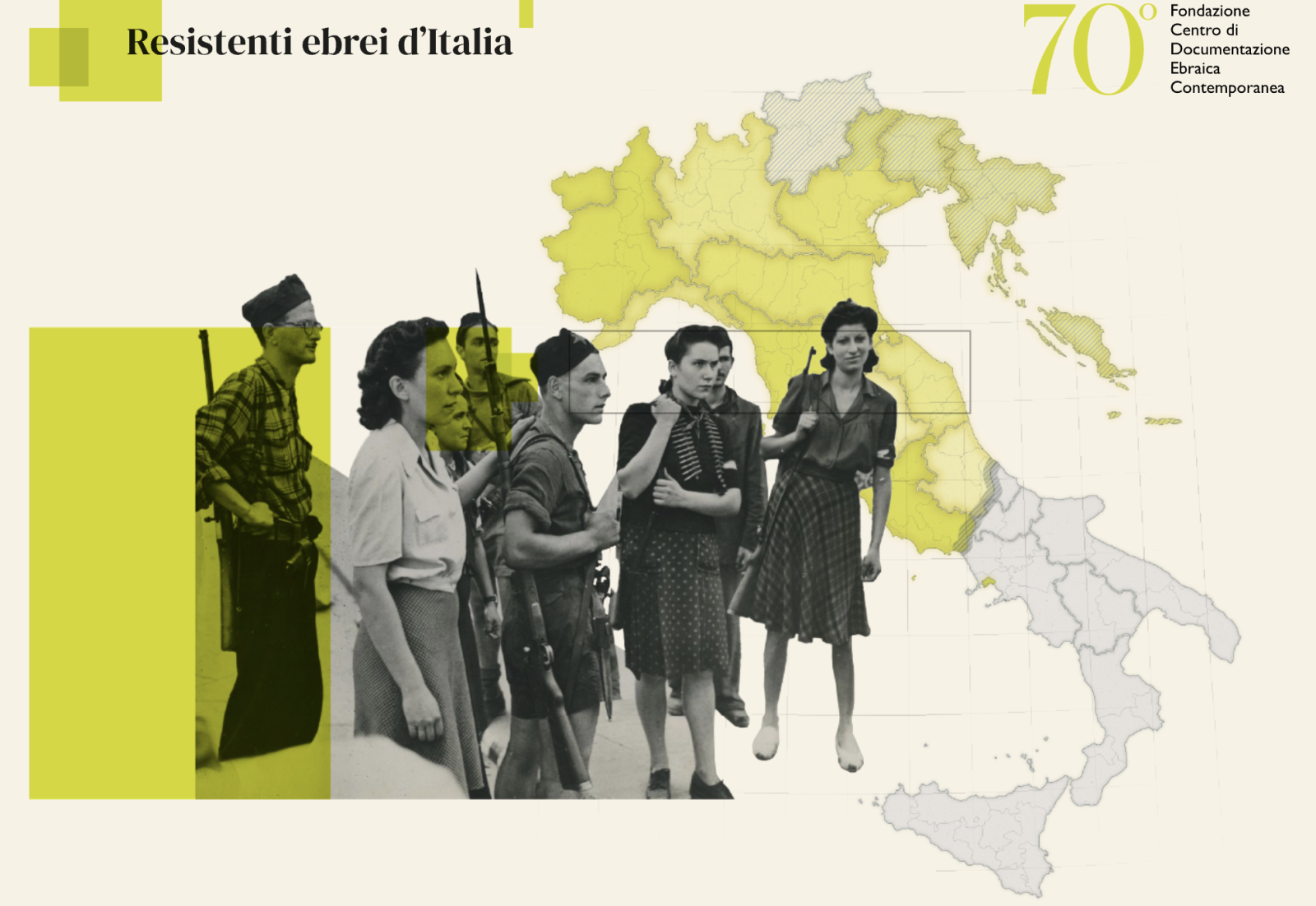RESISTANCE – The Jews who freed Italy, the last chapter of CDEC’s research

Seventy years later, a circle is partially closed. It was in 1955, on initiative of the FGEI (Italian Federation of Jewish Youth), that the Center for Contemporary Jewish Documentation was born in Milan. One of its first objectives was to collect testimonies and documents about Jewish members of the resistance against Nazi Fascism, to give the Jewish world an image different from that of mere victims. This groundbreaking work reached its full maturity, at least in terms of data collection, with the completion of the project “Resistenti ebrei d’Italia” (Italian Jewish Resistance fighters), curated by the historian Liliana Picciotto.
“In the beginning, we used to call this project ‘the Jews’ contribution to Italian resistance’, but now, after four years of research and due to the quantity and quality of this phenomenon, I convinced myself that it was not a contribution that came from the outside, but it was in fact a constructive input to the ideas and practices of the Resistance,” Picciotto said to Pagine Ebraiche.
This conviction strengthened when hundreds of stories emerged, many of which had been forgotten until that moment. These are stories of Jewish men and women that fought against Nazi Fascism all over Italy between 1943 and 1945; they were either armed or unarmed, equipped with the strength of their ideas, with underground organisations, and with the help of the persecuted or the involvement in partisan formations.
The project has searched thousands of sources, documents, public and private archives (starting with those of the CDEC and the Central Archive of the State), but also personal memoirs, letters and testimonies. The data are now accessible on the website resistentiebrei.cdec.it, where 815 biographical profiles have been collected. They are accompanied by personal and historical information and, in some cases, by podcasts and digital exhibitions. “This is a meticulous and ongoing work, aimed at discovering new names. I read everything about the Resistance, and every time a surname catches my eye, I check it out. The latest case came up in the last few days, when I found Paolo Adler from Turin, who was listed as a Jew in the Fascist censuses”.
Partisan Gianfranco Sarfatti
Among the stories that emerged during the last phase of research, Gianfranco Sarfatti’s stands out for its coherence and clarity of choice, underlined the historian. Born in Florence in 1922, he was expelled from school at the age of 16 because of Italy’s racist laws of 1938. He continued his studies as a home scholar, while already helping foreign Jewish refugees. In 1943, after the fall of Fascism, he enrolled at the university and became closer to the Communist Party.
On September 8, 1943m he joined the Youth Front, the organization of young people involved in the Resistance, conceived by Eugenio Curiel from Trieste, who would later be awarded the Gold Medal for Military Valour. After a roundup in Florence in 1944, Sarfatti was one of the few in his group not to be arrested. He followed the party’s advice and moved to Switzerland with his parents, with the help of Tina Lorenzoni, a partisan courier who died shortly after the liberation of Florence.
He was admitted to the Faculty of Engineering in Lausanne (Switzerland) and joined the Corda Fratres Association, continuing to organize political activities among students. In August, he decided to return to Italy with a group of volunteers. In Cogne, in the Aosta Valley, he founded a partisan newspaper and took the codename Gaddo, in honor of his brother who had emigrated to Mandate Palestine. In the months that followed, he took on the role of political commissar in the La Suelvaz partisan group. During the winter, the group took refuge in Morganetta di Fenis, at high altitude, where he endured difficult conditions. On February 21, 1945, the group was surprised by an Italian-German ambush. Some were able to escape, but Gaddo, although wounded, remained with three comrades. They were all captured and killed.
The book in progress
His story, like many others, has been brought back to the collective memory thanks to the work of the CDEC Foundation. The last phase of the research was presented on April 25th at the Shoah Memorial in Milan. On Italy’s Liberation Day, five new stories of Jewish partisans were discovered: those of Gilberto Coen, Bruno Dell’Arriccia, Enrico Lowenthal, Adolfo Perugia and Franco Valabrega. “This phase of the work has been completed, but the research is far from over. We will continue: we are working on a book that will contain all the reflections that cannot find a place on the website, in order to give back complexity to the identities, the choices and the lives that we have met during our work”, concluded Picciotto.
Daniel Reichel
Translated by Chiara Tona, student at the Advanced School for Interpreters and Translators of the University of Trieste, trainee in the newsroom of the Union of the Italian Jewish Communities – Pagine Ebraiche.
